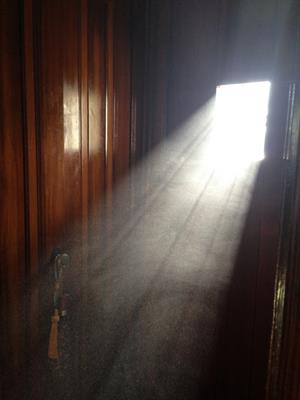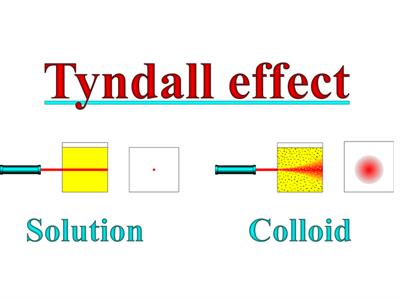PDF chapter test TRY NOW
Tyndall Scattering:

Sunlight entering through windows
When a ray of sunlight shines through a window into a dusty room, its path is visible to us. This is due to the tiny dust particles in the room's air scattering the light beam. This is a case of Tyndall Scattering in action. Tyndall Scattering or Tyndall Effect is the scattering of light rays by colloidal particles in a colloidal solution.

Tyndall effect in solution and colloid
What is colloid?
A colloid is a microscopically small substance that is equally dispersed throughout another material.
Example:
Milk, Ice cream, Muddy water, Smoke
Raman scattering:
A portion of light rays are scattered when a parallel beam of monochromatic (single-colored) light passes through a gas, liquid, or transparent solid. The scattered light contains additional frequencies (or wavelengths) other than that of incident frequency (or wavelength). This is known as Raman scattering or Raman Effect.
Raman Scattering is defined as “The interaction of light rays with the particles of pure liquids or transparent solids, which leads to a change in wavelength or frequency.” The spectral lines having a frequency equal to the incident ray frequency are called ‘Rayleigh line’ and the spectral lines with frequencies other than the incident ray frequency are called ‘Raman lines’.
The lines with frequencies lower than the incident frequency is called stokes lines, and the lines with frequencies higher than the incident frequency are called Antistokes lines. You will study more about Raman Effect in higher classes.
Reference:
https://pxhere.com/en/photo/571964
